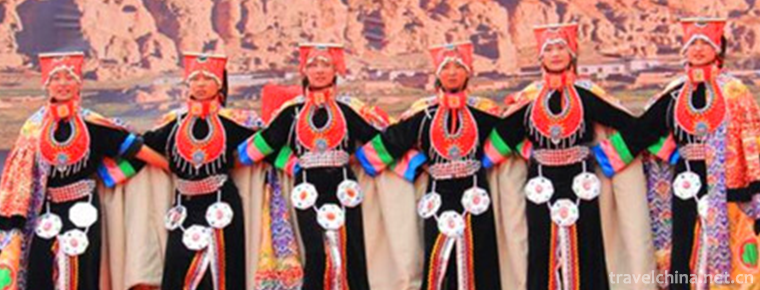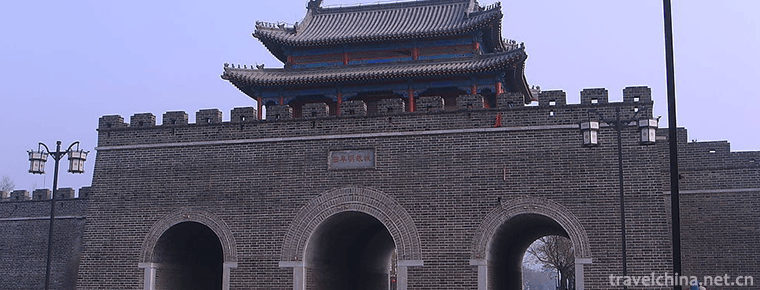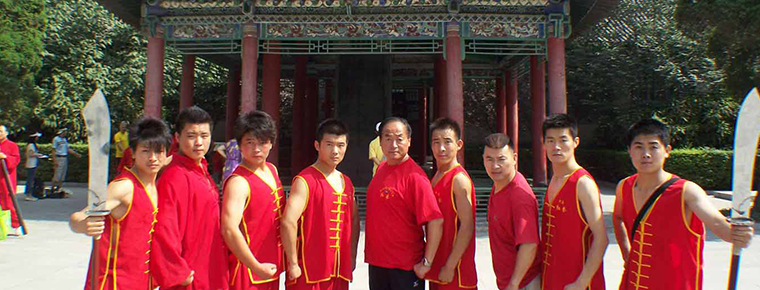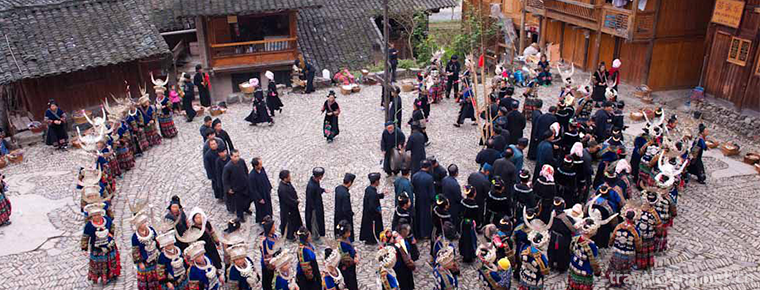2019-02-07

- By ChinaWiki.net
- Chinese Edition
- 2019-07-09
Xuan dance
Xuan is the Xiangxiong language. The earliest name used by Yongzhong Ben religion of the ancient Xiangxiong Buddha is "Xuan" dance. Xuan has more profound and profound implications. Xuan is a transliteration in Chinese translation. Xuan, Xuan and Xian have been used to express the meaning of song and dance. "Xuan" Dance and the other two kinds of Ali are still popular today.
"Kale" and "Zhuo" (Zhuo includes Guozhuang) are two series of songs and dances with strong cultural characteristics of Xiangxiong. Xuan dance is a kind of traditional Tibetan lyric song and dance, which is rich in ancient charm and elegant in expression, singing and dancing.
On June 7, 2008, Xuanwu was listed in the second batch of national intangible cultural heritage list with the approval of the State Council.
The earliest propaganda dances can be traced back to the glorious and prosperous period of the Ancient Xiangxiong Dynasty. According to Tibetan historical records, propaganda dances were performed whenever Yongzhongben Buddhist Zu Dunba was welcomed or sent to Yongzhongben, and on the fifteenth day of the first lunar month, when Miwo Buddha was born. The number of dancers is less than 20, and more than 100. A male dancer is inspired by a leather drum. Among all the "Xuan" schedules, he is the first to take the lead in dancing. When dancing Xuan dance, dancers always wear the most exquisite and luxurious clothes, the most brilliant cloak, the most precious and dazzling jewelry, headdresses covered with silver inlaid with red coral and turquoise, and other jewelry. Their arms are crossed in front of their chest, dancing with Xuan dance steps, singing and dancing with Dragon Body lines or changeable queues. First slow and then fast dance rhythm dancing, accompanied by big drums, small drums, big trumpets, Suona, gongs, bowls, etc., melodious voice, steady gait, singing and dancing, dancing "Xuan" dance turn direction is also consistent with the direction of the transformation of Xiangxiong Yongzhong Ben religion .
Xuan Dance originated from the ancient Xiangxiong Dynasty and developed continuously when it was inherited to the Guge Dynasty. Xuanxiong dance is the most iconic traditional folk art in Ali area. It has been inherited completely for thousands of years from Xiangxiong to Guge. It records history well and expresses the pious beliefs of Plateau people. "Xuan" dance is a combination of speaking, singing and dancing. Its costumes are exquisite and luxurious, its songs are melodious and its gestures are graceful and graceful. The whole dance is noble and elegant, its gait is steady and graceful, which contains solemn joy. The dance form is different from the fast rhythm of Tibetan dance in other areas. The dance gestures blend the folk dances of Central Tibet and Post-Tibet. The essence is unique, and the rap form shows the profound and unique charm of the culture and art of ancient times, which covers all aspects of Tibetan religion, etiquette, customs, festivals and so on. Xuanwu is also a beautiful carrier and an excellent way to display the rich and beautiful Tibetan costumes. It has strong cultural color and unique charm of the elephant male.
Its dance posture combines the essence of Chinese Tibetan and Tibetan folk dance. It has unique features. The rap form shows the unique charm of Tibetan ancient language and literature, covering all aspects of Tibetan religion, etiquette, customs, festivals and so on. It gives people a sense of joy in a clear hierarchy, step by step and tranquility. "Xuan" dance combines Tibetan opera, dance, rap and other major Tibetan folk arts, and adds new development and changes on this basis. It is different from other folk art forms in Tibet, and has its own unique style and charm.

Ask a Question
Your email address will not be published.



0 Questions